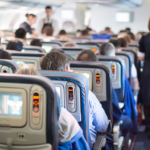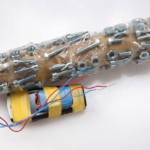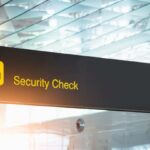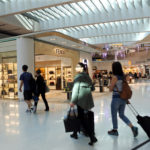Offences Against Endangering an Aircraft in Australia
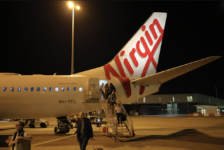
Aircrafts have evolved to become an integral part of modern life, transporting us from city to city and country to country for employment, business and other economic reasons, as well as enabling us to unwind and explore the globe.
But with the proliferation of this generally safe means of transportation comes rules and regulations, and given we’re dealing with large pieces of machinery largely controlled and managed by humans whereby outside interference can have catastrophic consequences, laws have been implemented to deter and punish those whose conduct can pose a danger to those on board.
This article explores the evolution of aviation and historical uses of aircraft, as well as rules and regulations above those already contained in the general law that apply to those travelling on aircraft and those seeking to interfere with an aircraft. It also takes a look at incidents whereby those with nefarious intent have brought about death and destruction.
The First Aeroplane
After years of dreaming and research two brothers, Wilbur and Orville Wright completed the first successful flight in an aircraft they built in 1903.
Others had attempted valiant efforts at flying but it is mainly conceded that the Wright aircraft was the first to achieve a controlled flight. C
onjecture within the semantics of what constitutes sustained powered flight led some to consider the flight of another pioneering aviator in 1906 that Brazilian Alberto Santos-Dumont was actually the first.
Then came news that a German immigrant Gustave Whitehead had in 1901 flown his aircraft over Connecticut in North Carolina USA.
Whilst controversy raged over the bonafides of Mr Whitehead’s flight it took an Australian aviation historian John Brown to locate the missing evidence that it was indeed a good flight seemingly confirming Gustave’s flight the first successful flying of an aircraft. Connecticut legislators signed into law that very fact.
No matter, all three deserve the accolade of being the very first aviators to successfully fly an aircraft and benefit the world although as we shall see not all of the time.
War Planes and the endangerment of aircraft
The First World War saw the endangering of an aircraft in massive numbers. 27,637 German aircraft were not only endangered but utterly destroyed with Entente (Allied Forces, Great Britain and France) losing 88,613 aircraft.
Whilst the aircraft were destroyed by primitive anti-aircraft artillery and ace pilots fighting other pilots with machine guns mounted on the plane, there emerged star billing pilots such as the German Red Baron who is credited with 80 kills on his own; meaning he shot down 80 aircraft.
However, this pales into insignificance with the top World War 11 pilot German Erich Bubi Hartmann who had 352 kills in his Messerschmitt Bf 109 fighter plane and in 1404 missions was never shot down. Of course the Red Baron only had a Fokker Dr.1 Triplane.
Whilst accurate figures for aircraft destroyed in World War 11 are difficult to confirm, based on the fact that the USA alone lost 105,000 aircraft it is not too long a bow to draw to suggest perhaps several hundred thousand between all warring nations is a reasonable figure.
Causes of Aircraft Tragedies
The causes of aircraft tragedies are vast, and include intentional interference – such as acts of terrorism and hijackings for financial gain or nefarious motives, pilot error – air traffic control personnel mistakes, deficient maintenance, hazardous weather, collisions with birds and geological incidents such as volcanic ash and technical malfunctions.
It also includes flawed scientific equipment.
When not in flight
There are many ways an aircraft can be endangered even if it is not flying high in the skies. Pilot error and misunderstandings by the air traffic control tower on the beautiful Spanish island of Tenerife in 1977 was the scene of two Boeing passenger aircraft colliding on the runway leading to the death of 583 people.
Ironically, it was a terrorist incident injuring 8 people at an alternative airport which saw diversion of aircraft traffic causing congestion at the airport of tragedy.
This contributed to the largest single aviation disaster ever recorded notwithstanding that of the 9/11 terrorist attacks on America. Although fog was an additional contributing factor which saw only 61 survivors from one of the planes.
The Boeing tragedy
One of the more recent prominent causes of aircraft tragedies has been the implementation of modern technology ironically designed to improve safety of aircrafts.
This recently caused two Boeing 737 MAX passenger aircraft to crash near Jakarta Indonesia in 2018 and Bishoftu Ethiopia in 2019 resulting in hundreds of deaths.
This was due to a malfunctioning automated system named Manoeuvring Characteristics Augmentation System (MCAS) initially designed to enhance the stability of the aircraft.
This resulted in the grounding of Boeing 737 MAX aircraft and the charging of one Boeing chief technical pilot who was found not guilty with Boeing fined including establishing a victims fund totalling in the vicinity of usd2.5 billion.
The MCAS was enhanced and so far, so good. After being grounded for approximately 2 years the Boeing 737 Max 8 is back in the skies. Incidentally Virgin Australia had ordered 4 of the Boeing 737 MAX planes amongst other models.
Whilst the 737-800 is a predecessor of the 737 MAX, it does not have the system associated with MAX crashes.
China Eastern Airlines
As a result of mainland China’s deadliest aviation disaster in 28 years in March 2022 killing 123 passengers, in excess of 200 Boeing 737-800s of the China Eastern Airlines fleet were grounded for a short period of time of approximately four weeks.
Later, unconfirmed suggestions emerged about possible pilot suicide or hijacking of the aircraft which crashed.
Jorge Chavez international airport Peru
18 November 2022 saw another plane crash without being in the air when an A320 Airbus whilst taking off at Jorge Chavez International Airport Peru encountered a fire truck ending in the death of two firefighters. None of the passengers and flight crew were injured.
From 1974 until 2020, there have been over 30 aircraft tragedies killing in excess of 200 passengers, crew and people on the ground on each occasion.
Notwithstanding this, thousands of other aircraft tragedies occurred involving deaths in lower numbers. There are many more with less fatalities but others with more fatalities.
Suspicious pilot involvement in crashing aircraft
There have also been times when deranged or terrorist pilots have deliberately crashed their planes or are suspected of having done so such as
- Royal Air Maroc Flight 630 killing 44 passengers and crew members on 21 August 1994.
- SilkAir Flight 185 killing 97 passengers and 7 crew members on 19 December 1997.
- EgyptAir Flight 990 killing 217 passengers and crew members on 31 October 1999.
- Germanwings Flight 9525 killing 144 passengers and 6 crew members on 25 March 2015.
Global safety legacy of the Tenerife tragedy
A tragedy in 1977 was a catalyst for global changes to be implemented by aviation authorities in a way not seen before.
The terms ‘roger’ or OK generally regarded as confirming the last message was received and understood over the airwaves between foreign pilots and control towers was replaced with a repeating of the key portion of the instruction or request.
Also, the word ‘take-off’ was replaced with the word ‘departure’ except when actual take-off is cleared or cancelled. English as a working language between airline and tower was encouraged.
Cockpit procedures were also improved with all pilots to evaluate each situation in spite of whom had more experience which eliminated a singular decision from being acted upon when there were other competing opinions.
This initiative ultimately led to one of the main tenets of what is still used to this day in the training of pilots and indeed astronauts in space training that of Crew Resource Management (CRM).
All of this vastly lessens the potential for endangering aircraft through poor decision-making, fatigue and stress.
Crew Resource Management (CRM)
Aviation researchers in the area of human factors after analysing thousands of incidents and potential incidents were able to determine that human factors such as poor communication, reticence in questioning a senior pilot with more vast experience, stress and fatigue led to between 70% and 80% of catastrophes involving aircraft. This is a highly significant statistic leading to a critical change in aircraft processes being CRM.
CRM is a multi-disciplinary learning system which addresses the root causes of safety outcomes and focuses on leadership and interpersonal communication skills irrespective of one’s level of experience.
This, in turn, leads to improved communication, enhanced situational awareness and ultimately better decision-making in aircraft cockpits including spaceships.
Some aviation historians say that the needless 1978 crash of United Airlines Flight 173 also ultimately contributed to the emergence of CRM.
Dare it be said there would be countless contributory incidents which assisted in what eventually emerged as CRM due to the thousands of such incidents analysed by experts.
It must be remembered however that there were earlier variations comprising some but not all of the principles which the modern version delivered albeit with different names.
David Beaty a former Royal Air Force and BOAC pilot wrote in 1969 about the human factor in aircraft accidents and was another early contributor.
National Aeronautical and Space Administration (NASA)
NASA psychologist John Lauber coined the term Cockpit Resource Management (which later became Crew Resource Management) in 1979 and had studied cockpit interaction for some years.
This is interesting in that Jerry Mullenburg, a 25 year NASA veteran who was a pilot himself stated that CRM enhances NASA pointing out that flawed decision-making was one of the root causes of the loss of the Challenger and Columbia space shuttles which killed their flight crews.
Poor decision-making also contributed to the loss of the Mars Climate Orbiter and the Mars Polar Lander including issues associated with other projects.
It is clear that NASA now fully embraces the more modern and precise aspects of CRM recognising that it makes no difference how technically intelligent one is or what their position in the hierarchical structure is, the process must be strictly adhered to in order to avoid complacency.
It is interesting to note that United Airlines was the first airline company to endorse a CRM program in 1981.
A Fine Example of Crew Resource Management
Captain Chesley (Sully) Sullenberger as a result of his Airbus A320 hitting a flock of geese was left with no functioning engines but landed his aircraft on New York’s Hudson River in 2009 saving all on board. As the captain explained his entire professional life had led up to that moment and stated that he owed a lot to the CRM training he went through.
The Bravery of Flight Personnel
Aircraft personnel have saved the lives of hundreds of thousands of flight passengers and those on the ground by their brave confrontation and prevention of those intent on endangering an aircraft and by default all who fly in it.
Facts of incidents such as preventing distraught or disturbed passengers from attempting to open aircraft doors during flights are well documented.
Similar intervention by staff and responsible passengers alike preventing unauthorised access to the cockpit of the aircraft has been instrumental in keeping many aircraft and passengers safe.
In addition, there are hundreds of thousands of incidents reported world-wide of passengers involved in various aspects of what is commonly known as air rage and thereby endangering the aeroplane.
This involves unruly perhaps drunk or drug affected passengers and possibly those with mental health impairments becoming involved in physical or verbal altercations with the potential for endangering the aircraft in which they are flying.
The Utmost Sacrifice for Fellow Humankind
September 11, 2001 – United Airlines Flight 93.
This aircraft was heading to crash into the U.S. Capitol Building in Washington DC which is the centre of American politics having been hijacked by al-Qaeda terrorists when passengers and crew fought back to retake the plane.
This courageous action of passengers knowing that they would surely die but in doing so save America, forced the hijackers to crash the plane not into its intended target but simply into a field.
Telephone calls between passengers and those on the ground had made it clear that another plane had crashed into the Pentagon which was the headquarters of the United States department of defence.
This unselfish courageous action resulted in the death of all Flight 93 passengers and crew which also saw the death of 5 hijackers and included 125 Pentagon employees from the attack by the other passenger aircraft.
The crashing of the four hijacked 9/11 planes resulted in total deaths of close to 3,000 innocent men, women and children.
Qantas an Australian Airline to be Proud of
Qantas, for a long time regarded as the safest airline in the world was formed in 1920 and commenced passenger flights in 1935 but sadly has slipped down the ladder of safety. The name is actually an acronym of what it used to be called being Queensland and Northern Territory Aerial Services.
Affectionally known as The Flying Kangaroo Qantas is 103 years old this year and became a World War 11 hero when the Australian Government commandeered most of its fleet for war service.
Air New Zealand has taken over the mantle of the world’s safest airline with Qantas placed 7th, which is due to the age of its airline fleet coupled with a slight increase in recorded flight incidents.
Offences Relating to Endangering an Aircraft in Australia
Offences relating to endangering an aircraft in Australia are primarily contained in the Crimes (Aviation) Act 1991 (Cth) and Criminal Code Act 1995 (Cth) – which apply across the nation – but state and territory legislation such as the Crimes Act 1900 in New South Wales also contain such offence, which often overlap with federal laws.
Crimes (Aviation) Act 1991 (Cth)
Part 2 of the Crimes (Aviation) Act 1991 criminalises a broad range of conduct that may damage, destroy, endanger and/or threaten the safe operation of aircraft and/or those on board.
These offences are:
- 13 Hijacking
- 14 Other acts of violence
- 15 Other offences committed on aircraft
- 16 Taking control of aircraft
- 17 Destruction of aircraft
- 18 Destruction of aircraft with intent to kill
- 19 Prejudicing safe operation of aircraft
- 20 Prejudicing safe operation of aircraft with intent to kill etc.
- 20A Assaulting crew–general
- 21 Assaulting crew–affecting performance of duty
- 22 Endangering safety of aircraft–general
- 22A Endangering safety of aircraft–acts also likely to endanger life or cause serious harm
- 23 Dangerous goods–general
- 23A Dangerous goods–acts likely to endanger life or cause serious harm
- 24 Threats and false statements
- 25 Endangering the safety of aircraft in flight
- 26 Acts of violence at certain airports
Criminal Code Act 1995 (Cth)
Offences contained in the Crimes Act 1995 (Cth) that relate to aircraft are:
- 204 Destruction of aircraft or vessel with intent
- 205 Prejudicing the safe operation of an aircraft or vessel
- 206 Assaulting a crew member
- 207 Placing dangerous articles on aircraft
- 208 Threatening to destroy an aircraft
- 209 Giving false information to prejudice safety
- 210 Destroying or damaging an aid to aircraft navigation
Crimes Act 1900 (NSW)
And in New South Wales, discrete offences which relate to aircraft (as well as vehicles and vessels) include:
- 154B Stealing aircraft
- 204 Destruction of, or damage to, an aircraft with intent or reckless indifference
- 205 Prejudicing the safe operation of an aircraft
- 206 Assault etc on member of crew of aircraft
- 207 Placing etc dangerous articles on board an aircraft
- 208 Threatening to destroy etc an aircraft
- 209 False information as to plan etc to prejudice the safety of an aircraft or persons on board
- 210 Destroying, damaging etc an aid to navigation
Receive all of our articles weekly
Related Articles
RELATED LEGISLATION
- Section 204 Crimes Act 1900 | Destruction of Aircraft or Vessel with Intent
- Section 205 Crimes Act 1900 | Prejudicing Safe Operation of Aircraft or Vessel
- Section 206 Crimes Act 1900 | Assaulting Crew Member
- Section 207 Crimes Act 1900 | Placing Dangerous Articles on Aircraft
- Section 208 Crimes Act 1900 | Threatening to Destroy Aircraft Vessel Vehicle
- Section 209 Crimes Act 1900 | False Information to Prejudice Safety
- Section 210 Crimes Act 1900 | Destroying or Damaging Aid to Navigation
- Section 154B Crimes Act 1900 | Stealing Aircraft

